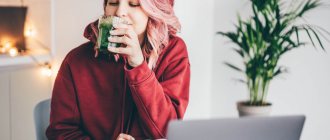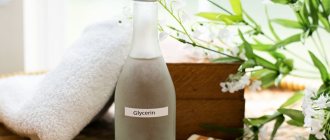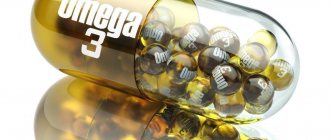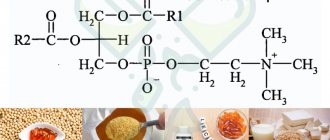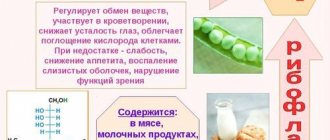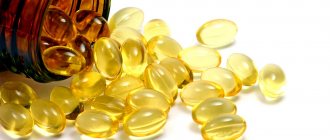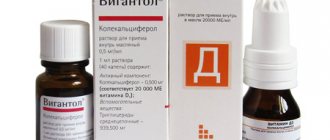From this article you will learn:
- how effective is retinol for the face,
- what forms of retinol are there,
- effective concentrations, timing of application.
The article was written by a specialist with higher medical education.
Retinol is one of the most effective ingredients in anti-aging cosmetics, which helps even out skin tone and texture, increase skin elasticity, and reduce the appearance of fine lines and wrinkles. Retinol is just one of many forms of vitamin A, which also include retinoic acid and retinaldehyde, as well as the so-called retinol esters (for example, retinol palmitate or retinol acetate).
Below you will see that real pure retinol and retinol esters are completely different in effectiveness forms of vitamin A. And it is preferable that retinol for facial skin be present in cosmetic products in the form of pure retinol, and not its esters. And below we will tell you why this is so important and how it affects the effectiveness of correcting age-related skin changes.
The best companies producing retinol products are:
The author of this article has a medical education and problem skin, so I know from personal experience all the nuances of using products with retinol, and which of them really work. In the photo above are the best products with retinol (one of the many that I have tried), which are produced by SkinCeuticals (USA) and ZO® Skin Health (USA). And these companies truly produce the most effective products with pure retinol - compared to many other products I have tried.
In this article we will talk about the criteria for choosing retinol products for the face so that they are truly effective. And of course, the main criteria will be the choice of the correct form of retinol, as well as its correct concentration. We will also talk about the duration of courses for correcting age-related changes using cosmetics with retinol, and when you can notice the first visible results.
Retinol and other forms of vitamin A –
Below we list all the main forms of vitamin A that can be found in anti-aging cosmetics - in descending order of their effectiveness:
- retinoic acid (tretinoin),
- retinaldehyde (retinal),
- retinol,
- retinol esters (retinol palmitate and retinol acetate).
The chemical formula of pure retinol is
Our skin has receptors for retinoic acid (the so-called RAR receptors), and it is their stimulation that leads to gradual rejuvenation of the skin. Retinoic acid is the strongest form of vitamin A, and it is also the only form that can interact with RAR receptors. Other forms of vitamin A are able to bind to these receptors - only after a series of metabolic transformations into each other.
For example, retinol esters, as a result of hydrolysis, must first turn into pure retinol, which then turns into retinaldehyde, which in turn turns into retinoic acid (tretinoin). And only retinoic acid already affects RAR receptors. Why is this so important? The fact is that there is a strict pattern: the more transformation cycles required for the original form of vitamin A in the composition of the product - to retinoic acid, the weaker the final effect of the cosmetic product will be.
Retinol acetate and retinol palmitate –
Retinol acetate is the weakest even when compared to other retinol esters. It is not included in cosmetic products, but in pharmacies it is sold either in the form of capsules or in the form of a 3.44% solution (in the form of a dropper bottle). Very often you can hear recommendations - apply a few drops of retinol acetate to your face, or add it to your cream. Of course, you can do this, but the maximum that this will give is an increase in skin hydration by increasing its hydrophobic properties, as well as a decrease in the thickness of the stratum corneum.
Retinol palmitate (retinyl palmitate) - sold in every pharmacy in the form of an oral solution. 1 ml of solution contains 100,000 units of retinol palmitate, which corresponds to approximately 55 mg, and thus the concentration of the solution is 5.5%. Some also recommend applying it to the face or adding it to a cream. But if compared with pure retinol, then retinol palmitate turns out to be about 20 times weaker than it, but due to its low cost and high stability, it is most often included in inexpensive cosmetics in the mass market segment (which is not intended for the correction of pronounced age-related changes).
The fact is that in the skin, retinol palmitate is converted only to a very small extent into pure retinol, which, accordingly, practically does not reach the dermis, where the main target cells - fibroblasts - are located. Retinol palmitate is primarily absorbed by keratinocytes (the cells of the epidermis), which have systems for storing it. The accumulated retinol palmitate is used by keratinocytes for their own needs - increased proliferation of stem keratinocytes occurs near the basement membrane + the thickness of the deep layers of the epidermis increases.
In addition, the thickness of the stratum corneum of the epidermis, consisting of dead keratinocytes, decreases. All of the above can improve skin tone and texture. Perhaps the smallest fine lines will go away, but not due to increased collagen production in the dermis, but due to a decrease in the thickness of the stratum corneum of the epidermis (peeling effect). But you should not count on reducing the depth of wrinkles, lifting the oval of the face, as well as a noticeable increase in skin elasticity. For this, it is no longer retinol palmitate that is needed, but more active forms of vitamin A.
Retinol release form
Before using retinol acetate, you need to find out in what form it is available:
- Oil solution for internal use. The concentration of the main component is different - 3.44% and 8.6%. It is drunk and also used for external use;
- Soft gelatin capsules filled with an oily yellow liquid. They are taken orally or punctured and the solution is added to ready-made creams or added to home remedies;
- Solution for injections. Its direct purpose is intramuscular injections, but the liquid is often used to prepare masks.
It is important to remember that the solution cannot be used in its pure form, as the likelihood of adverse reactions increases. To soften the aggressive effect of the concentrated vitamin, you need to combine it with other ingredients.
Pure retinol -
Real retinol, and not its esters, is already found in not too many cosmetic products. Moreover, very often manufacturers resort to deception - on the packaging in large letters they write that the product contains retinol, and in the ingredients in small print they may already write about retinol palmitate. The most important thing you should know about cosmetics with pure retinol is its concentration. Let's figure out which concentrations are effective.
1) Effective concentration of retinol –
We have already said above that the most effective form of vitamin A is “retinoic acid” (tretinoin). There are a large number of clinical studies that show that the optimal therapeutic concentration of tretinoin for the treatment of aging skin is 0.025%. And this is exactly the concentration recommended by the FDA (the most authoritative organization in the world that studies the effectiveness of pharmaceuticals and treatment methods). And as you will see below, this has a direct bearing on retinol.
Evidence base: 1) study “Griffiths CE, Kang S, Ellis CN et al. Two concentrations of topical tretinoin cause similar improvement of photoaging but different degrees of irritation." The study followed patients over 48 weeks and concluded that using a lower 0.025% tretinoin concentration for skin aging treatment had exactly the same effects as a higher 0.1% concentration. This is how the effective therapeutic concentration was determined.
2) Study “Olsen EA, Katz HI, Levine N et al. Tretinoin emollient cream: a new therapy for photodamaged skin. J Am Acad Dermatol 1992" shows that the use of products with tretinoin concentrations below 0.01% was not very effective. In this case, there was no significant difference in the condition of the skin before and after. And this also has a direct bearing on the effective concentration of retinol.
Important: the fact is that 0.1% pure retinol is approximately equivalent in effectiveness to 0.0025% tretinoin. It turns out that the 0.025% concentration of tretinoin recommended by the FDA for the correction of aging will correspond to 1.0% of pure retinol. That is why the world's leading manufacturers of anti-aging cosmetics with retinol, SKINCEUTICALS® and ZO® SKIN HEALTH, have products with 1.0% pure retinol in their lines. And these products are intended specifically for the correction of wrinkles in older patients.
Products with 0.3% pure retinol are suitable for correcting fine lines, as well as increasing skin elasticity, evening out skin tone and texture (products with 0.5% should add shallow wrinkles to the above). In addition, products with 0.1-0.3% pure retinol are suitable for correcting wrinkles in the corners of the eyes (while the 0.1% concentration is suitable for daily use, and 0.3% - only 3 times a week). The fact is that the skin around the eyes is thinner and more sensitive, and therefore lower concentrations will be effective here.
In addition, a 0.1-0.3% concentration can be used to prevent aging, as well as to acclimate the skin to retinoids (as a preparation before using a more concentrated 1.0% form of pure retinol).
2) Duration of use of retinol –
The study (“Two concentrations of topical tretinoin cause similar improvement of photoaging but different degrees of irritation” Griffiths CE, Kang S, Ellis CN et al.) shows that to achieve significant correction in older patients, the course of treatment should be at least 48 weeks . If we are talking about an average correction, the duration of the course should not be less than 36 weeks. And in any case, for any patients, the course should not be less than 24 weeks.
But there is one exception. Products with retinol can be prescribed for preparation before hardware rejuvenation methods, such as fractional RF lifting or laser resurfacing. In this case, even a 2-3 month course of pure retinol can significantly increase the effect of hardware methods. If you want to be guaranteed to get a pronounced anti-aging effect, and sooner than after 1 year, then the following scheme is suitable.
Carry out a course of 3 months with effective concentrations of pure retinol, after which do several fractional RF lifting procedures. These can be the following devices - 1) the “Venus Viva” device with a special “NanoFractional RF” applicator included in the kit, 2) a special tip for fractional grinding “Sublative RF”, which comes with the eTwo™ and Elos Plus™ devices. And it will be very effective.
3) Retinol microencapsulation technology –
If we talk about retinol esters, although they are not very effective, they have good stability. Those. the retinol in them is not destroyed by exposure to light and air. But pure retinol is quickly destroyed by both. Therefore, high-quality manufacturers use microencapsulation (or liposome) technology to stabilize pure retinol. In these cases, pure retinol molecules will be hidden in microcapsules or liposomes.
This protects pure retinol from degradation. When such technologies did not yet exist, high-quality manufacturers produced their products with pure retinol - only in opaque containers with a pump (dispenser). If retinol comes encapsulated, then such a dispenser is no longer needed. In addition, retinol in microcapsules has another excellent property - it significantly reduces the risk of skin irritation, which often occurs when using retinoids.
Important: many manufacturers of inexpensive cosmetics may not indicate the concentration of retinol at all. In addition, most manufacturers use non-encapsulated pure retinol in a cream or serum - and the product can come in a container without a dispenser, or in a transparent bottle (serum). Please note that if a manufacturer uses stabilized retinol in microcapsules or liposomes, this will always be written on the packaging. But don’t be confused: sometimes manufacturers write that their product contains a stable form of retinol, but we are talking about retinol palmitate, and not stabilized pure retinol (24stoma.ru).
Products with retinol: price
The world's leading manufacturers of cosmetics with pure retinol are definitely SKINCEUTICALS® and ZO® SKIN HEALTH. But we immediately warn you that the products of these companies are not cheap - from 6,500 rubles and above. In Kiehl's branded cosmetics stores, you can find a good cream-serum with retinol, Kiehl's Retinol Skin-Renewing Daily Micro-Dose Serum (Serum with a microdose of retinol for every day to combat the signs of skin aging). The cost of this serum is from 4300 rubles per 30 ml. More details about all these tools can be found in the link below.
Good cosmetics with retinol -
Products that contain 0.1% pure retinol + 0.1-0.2% retinol esters are available for purchase at the pharmacy (their cost will be from 2400 to 2700 rubles). In addition, on sites such as Amazon or Ebay, you can purchase products with pure retinol or retinaldehyde from another leading manufacturer, SIRCUIT® (a cream or serum from this company will cost $80).
And on the iHerb website you can purchase American and Neutrogena cosmetics for about 2,000 rubles. These are also well-known manufacturers of cosmetics with retinol, but they do not indicate the percentage of pure retinol in their products. At the link below, you can read the rating of the best products with retinol (according to our editors), as well as familiarize yourself with the composition and characteristics of these products.
→ The best products with retinol for facial skin
Contraindications
The use of products with retinol acetate is prohibited in the following cases:
- Hypersensitivity to various forms of vitamin A;
- Damaged lipid barrier (water-fat layer that protects the dermis from moisture loss);
- Photodamage to the skin (sunburn, photoallergic reactions, etc.);
- Very sensitive skin that is prone to redness, tingling, irritation;
- Open wounds with purulent contents.
Pregnant and lactating women can use vitamin A only after a doctor's approval. This is due to the fact that it can affect cellular structures containing DNA, disrupt the development of the fetus, and cause allergies in the infant.
You should be wary of the drainage effect of retinol acetate on the bile ducts or liver. If these organs are diseased, it is better to avoid products containing this component.
It is important to follow the dosage of the substance, otherwise severe itching, peeling, nausea, vomiting, headache, and hepatomegaly (enlarged liver) will occur. Cosmetologists advise starting with a dosage of 0.1 – 0.4%.
Before first use, it is recommended to conduct an allergy test. To do this, apply a small amount of the product to the inside of the wrist or elbow and leave for 30 minutes. If allergies do not appear, then the cream or mask can be used according to the instructions.
Retinol: reviews and instructions for use
To date, only 2 components of cosmetics have evidence of effectiveness against facial wrinkles. Firstly, these are retinoids, which include retinol, retinaldehyde and tretinoin, and secondly, pure 10-15% L-ascorbic acid. The FDA believes that these are the only ingredients in cosmetics that actually affect collagen production in the skin, and any doctor will tell you that if the FDA recommends something (and this does not happen often), then it really works.
Tretinoin (trans-retinoic acid) is the most active form of vitamin A, and this drug at a concentration of 0.025% allows you to achieve significant skin rejuvenation. But preparations with tretinoin have an irritating effect on the skin, and their use often results in dryness, redness, and peeling of the skin (especially in the first weeks of use). Therefore, over time, the cosmetic industry began to use milder forms of retinoids - such as pure retinol and retinaldehyde (retinal).
How to use retinol for facial skin (instructions):
Planning –
It usually takes 2-4 weeks for the skin to adjust to retinol. During this period, redness, dryness, peeling, itching and burning of the skin may occur, which is especially typical for people with sensitive and/or dry skin. To reduce the risk of side effects, at the first stage you should use products with lower concentrations, or follow the following recommendations for use.
For example, during the first week you can use your product only 2 times, the next 2 weeks - use it only 3 times, then switch to the “every other day” mode. But your goal is to gradually reach a daily use regimen. The frequency of use greatly depends on the skin type and the initial concentration of the product. Therefore, some patients can immediately start using it every other day, i.e. This is all quite individual. If on any day you notice severe redness of the skin, then do not use the product for several days (then slightly reduce the frequency of use).
Is it possible to use retinol in summer?
In the summer, you can also use retinol, but then in parallel you must use sunscreen with SPF 50. If you decide to start using retinol during the heating season, then it is advisable to monitor the humidity in the room, because low air humidity + retinol will definitely lead to more pronounced side effects, which we described above. An excellent product with SPF 50, which is one of the few that can be applied even to the eyelids, is “Anthelios Shaka Fluid” from La Roche-Posay.
Conduct an audit of cosmetic products -
Get rid of any cosmetics while using retinol that have even the slightest irritating effect. For example, it will not be possible to use -
- scrubs and chemical peels,
- alcohol-based tonics,
- products that dry the skin
- It will also be impossible to wax depilation on areas of the skin treated with retinol.
Particularly sensitive areas of the face -
If you are using a product with a high 1.0% concentration of pure retinol, then avoid getting the product on the skin near the wings of the nose, the red border of the lips, and the area around the eyes. These are particularly sensitive areas where such concentrations can cause burns. If you use a 0.3% concentration, then it can even be applied around the eyes (only on the fixed part of the eyelids), but this concentration can only be used around the eyes 3 times a week. Even smaller concentrations can be used around the eyes daily.
When to apply retinol products -
Retinol products are applied only once a day, preferably in the evening or before bed. Before applying retinol, the skin of the face should be washed with a mild cleanser and then dried very well. After washing, you should wait at least 5 minutes. If you apply products with retinol to insufficiently dry skin, this will greatly irritate it (dryness, flaking, etc.). We hope that our article: Retinol for facial skin reviews was useful to you!
Sources:
1. Higher medical education of the author of the article, 2. Textbook of dermatology “Fitzpatrick's Dermatology” (8th edition), 3. American Academy of Dermatology (USA), 4. “Cosmetic dermatology” (Bauman L.). 5. Clinical studies published at https://www.ncbi.nlm.nih.gov/.
Beneficial properties of retinol
Retinoids, which include retinol acetate, interact with receptors in the epidermis and dermis, so the benefits of retinol in cosmetology are enormous:
- Stimulates the renewal of epidermal cells. That is why, at the first time of use, a person feels that the skin becomes drier, tighter, and flaky. After some time, her condition stabilizes as the keratinized cells fall off;
- Normalizes the functioning of the sebaceous glands, after which the pores narrow and inflammation disappears;
- Activates fibroblasts - cells that produce collagen, elastin, hyaluronic acid. This allows you to get rid of excessive dryness, make wrinkles less pronounced, and increase the density of the dermis;
- Acts as an antioxidant: protects cells from the negative effects of UV rays, relieves itching, redness, cleanses the epidermis of harmful accumulations (waste, toxins);
- Stimulates blood microcirculation, metabolic processes, cell nutrition;
- Increases the strength and elasticity of vascular walls. Helps defeat rosacea (vascular network);
- Lightens pigment spots, evens out tone.
Retinol peeling cleanses pores of impurities and sebum, renewing the upper layers. With regular use, the product eliminates acne, which appears due to the accumulation of dead cells and hardened secretions of the sebaceous glands.


